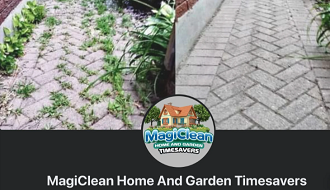Find out how to develop leeks – Suttons Gardening Develop How
Leeks are straightforward to develop from seed, and supply a flexible crop that may be braised, roasted, grilled, steamed, sautéed, stir-fried or added to soups and stews. You may even develop leeks in a big container. We requested skilled allotment grower Lee Senior to share his skilled recommendation on rising this tasty member of the onion household. Listed below are his prime suggestions for efficiently rising leeks.
Need to give it a go? Browse our full vary of leek seeds.
How to decide on one of the best leek varieties to develop
When selecting one of the best varieties in your allotment or vegetable patch there are two key issues to think about. The primary is the situation. Some leeks are hardier than others and Autumn varieties are usually rather less chilly tolerant.
The second consideration is the size of the cropping season that you simply require. With cautious planning it’s fairly doable to be harvesting from late September by way of till Easter, giving an exquisite six months of cropping for those who love your leeks!
- For an early-cropping autumn selection look no additional than Leek ‘Blue Inexperienced Autumn Neptune’.
- For sheer winter-hardiness and reliability, nothing beats the time-served Leek ‘Musselburgh’. This selection crops all through the mainstay of winter from the tip of November till early March.
- For a late cropper, I just like the aptly-named selection ‘Northern Lights’. The leaves of this leek, whereas not fairly as spectacular as the true factor, change color from inexperienced to purple as winter progresses. Extra importantly, it stands nicely and may be harvested as late as the tip of April.
Sowing leek seeds indoors
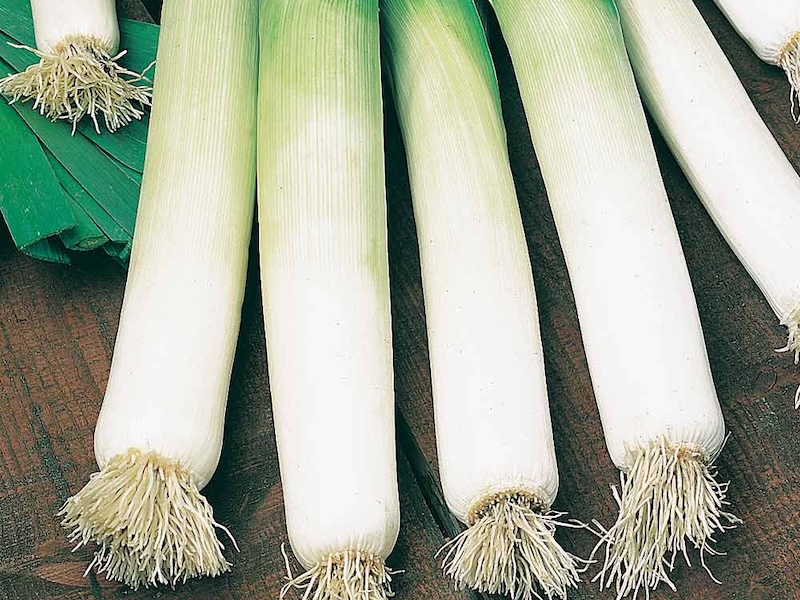
Excessive yielding and rust resistant, ‘Blue Inexperienced Autumn Neptune’ is winter hardy
Picture: Leek ‘Blue Inexperienced Autumn Neptune’ Seeds from Suttons
Leeks require an extended rising season for the shanks to achieve an honest thickness. The time from seed sowing to cropping mature-sized greens is 28-32 weeks, relying on the range.
Through the years, I’ve tended to sow nearly all of leek seeds indoors in a chilly greenhouse. From a late February or early March sowing, the solar may be heat sufficient to supply ample temperatures for dependable germination. Alternatively, if the climate continues to be wintery, use a heated propagator or heat windowsill to supply the required 12-18C (54-65F) temperature. Germination takes about 14-21 days.
If you happen to’re rising exhibition leeks the sowing time is even earlier, from mid-January to early February. These want an extended season to develop to a better measurement. Listed below are my suggestions for sowing underneath cowl:
- Fill small pots, modules or deep seed trays with multipurpose or seed compost.
- Sow the seeds thinly and shallowly to a depth of 15mm (half an inch).
- Calmly cowl them with compost or perlite and gently agency.
- After germination, develop the seedlings on by maintaining them cool and out of an excessive amount of direct spring daylight.
- Gradual and regular improvement of the younger crops is what you’re after. Attempt to maintain them moist always.
- Harden the younger crops off earlier than planting them out of their remaining rising positions on the finish of Could.
Sowing leek seeds outdoor
 This uncommon selection modifications from inexperienced to purple throughout winter
This uncommon selection modifications from inexperienced to purple throughout winter
Picture: Leek ‘Northern Lights’ F1 Seeds from Suttons
There’s no level sowing seeds too early within the 12 months when the soil continues to be chilly and germination will likely be erratic. Outside-sown leeks usually mature just a little later than crops began off indoors, so a mix of each indoor and out of doors sowings may be helpful.
If the climate is sweet and you’ve got the area, leeks may be direct sown the place you need them to develop as soon as the soil warms up at the start of April. Alternatively, you can begin them in a seed mattress. Listed below are my suggestions for sowing leek seeds outdoor:
- Put together and rake the soil to a high-quality tilth.
- Sow the seed thinly in a seed drill lined with multipurpose compost at a depth of 15mm (half an inch).
- Water the drill earlier than sowing if the soil is dry.
- Calmly cowl the seed drill, with high-quality soil, frivolously firming as you go. I’ve discovered it’s nicely price overlaying the seed drill with a transportable cloche or fleece to assist germination and defend from any chilly situations.
- Germination takes round 18-21 days relying on the climate. This might be longer if chilly climate strikes.
- Regularly skinny the seedlings to round 20cm (8in) aside and across the thickness of a pencil. The thinnings can be utilized for transplanting to make new rows. Alternatively they can be utilized in salads or handled as child leeks or barely bigger spring onions!
- Leeks can be grown outdoor in a seedbed at the start of April after which transplanted to their remaining rising positions. This alleviates the necessity for hardening off the seedlings.
Seed tapes are a terrific different option to develop leeks. They’re additionally a great way to get an extended cropping season as they comprise varieties that mature at completely different occasions. Suttons 6m leek seed tape accommodates a mess of various varieties together with ‘Musselburgh’, ‘Neptune’ and ‘Porbella’. The tapes can be utilized from early to late April and are utterly fuss-free. Select a sunny or semi-shaded spot the place the soil has been ready to a high-quality tilth. Merely make a small groove and water nicely earlier than rigorously rolling out the tape and reducing to size. Calmly cowl the tape and guarantee it doesn’t dry out.
Planting leeks out into their remaining place
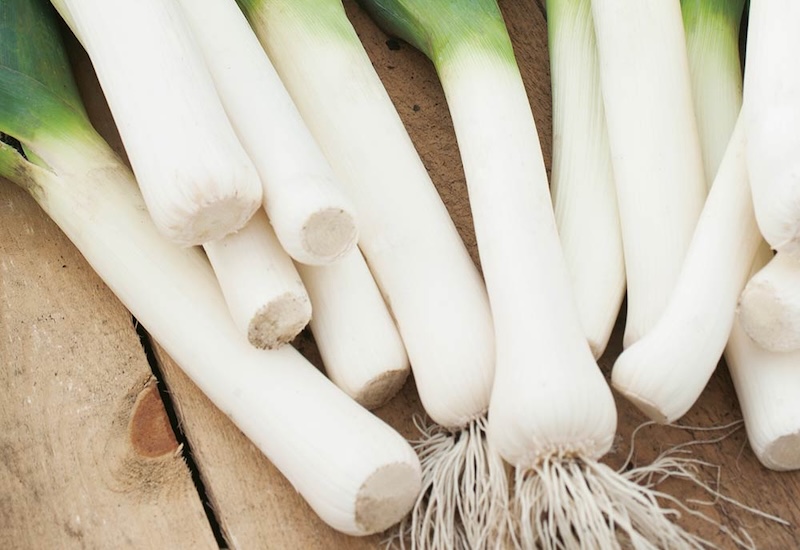
‘Under Zero’ is likely one of the hardiest varieties you’ll be able to develop
Picture: Leek F1 ‘Under Zero’ Seeds from Suttons
The perfect method for planting out leeks is a subject that may divide opinion, and plenty of allotment holders have a singular approach that works for them. Your most popular approach might differ barely out of your allotment neighbour, however that’s high-quality if it really works for you! Right here’s how I plant my seedlings out:
- Select a sunny website, though leeks can deal with semi-shade.
- If you happen to’re rising a couple of row, enable 30cm (12in) between rows.
- Transplant the younger crops after they’re round 15-20cms tall (6-8 inches).
- Make a gap round 15cms (6 inches) deep with a dibber or your finger.
- Rigorously drop the plant inside the outlet and unfold the roots. Most significantly, fill the outlet with water to permit the roots to settle.
- Some growers backfill the holes themselves with soil, as I do, whereas others depart them to fill naturally over time. Depart the highest 8cms (3 inches) of the younger leek above the highest of the outlet. This lets you get loads of the tasty white blanched stem that every one leek-growers try for.
Find out how to look after leeks
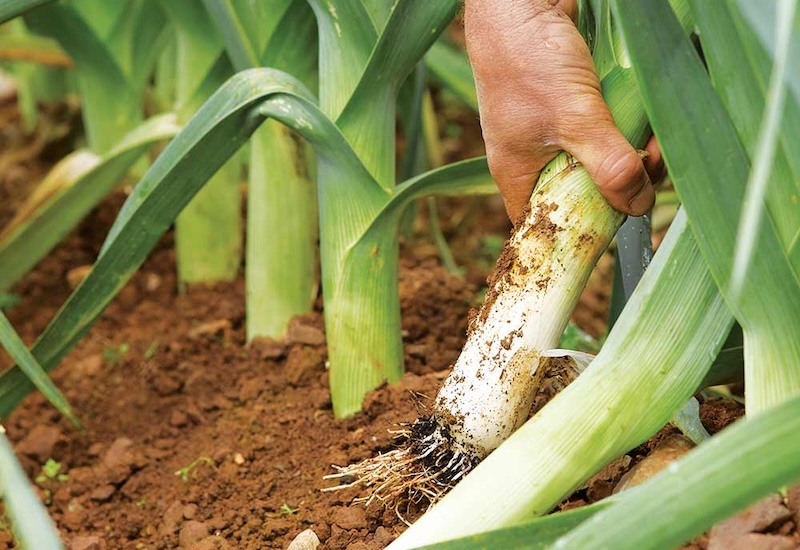
This selection has lengthy pale shanks and good resistance to leek rust
Picture: Leek F1 ‘Sprintan’ Seeds from Suttons
Leeks aren’t troublesome to develop, so long as good primary backyard husbandry is employed. They like a well-drained, humus-rich soil containing loads of rotted natural matter. Attempt to decide on part of your allotment that hasn’t grown leeks or alliums for a number of years. If you need lengthy, blanched stems, mound up the soil round every plant within the second half of summer time.
Hold an eye fixed out for slugs and snails after transplanting your leeks. They don’t appear to be the primary favorite of these pesky molluscs, however they may take them in moist climate if there’s nothing else round.
Leeks dislike erratic moisture ranges, particularly after they’re newly transplanted. Additionally they dislike chilly spring climate and any checks to their development. This will encourage the crops to bolt which is likely one of the commonest issues. If the crops do begin to bolt, the trick is to take away any flower spikes very early whereas they’re quick and nonetheless in bud. If you happen to don’t, the crops will go woody. If you happen to catch and take away the flower spikes early sufficient, the remainder of the leeks can be utilized as regular. (It’s price noting that the younger flowers are edible and have a fragile flavour.)
Rust is frequent on leeks, and wherever I’ve grown them it appears to observe me round! The so-called ‘rust’ is actually a fungus. These tell-tale orange spots are worse when leeks are grown too shut collectively in damp, humid situations. Though frequent in leeks and alliums, the rust is usually not damaging however seems unpleasant. Attempt to select resistant varieties the place doable.
Find out how to harvest and retailer leeks
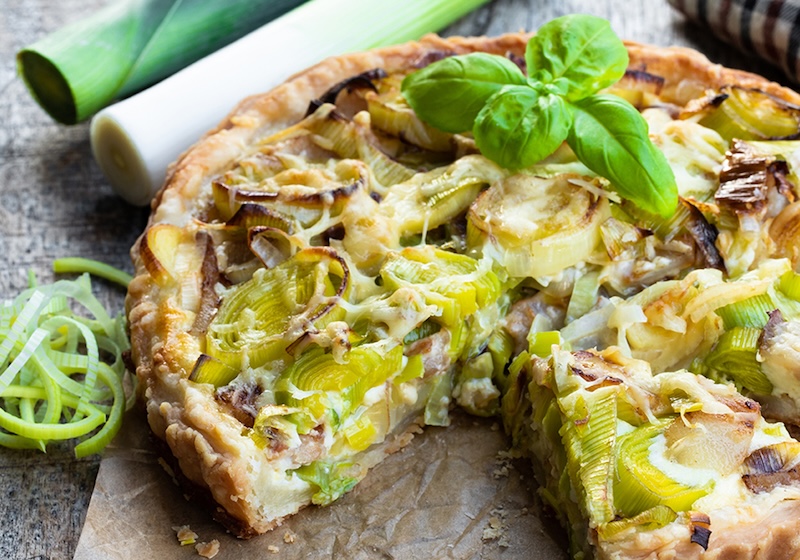
This trio of leek varieties offers an extended cropping season to be used within the kitchen
Picture: Leeks Seed Tape from Suttons
Leeks may be dug up gently utilizing a fork beneath the plant. Merely loosen the soil, tease the roots out and shake off extra soil. In case you have loamy or free-draining soils, they can be harvested by hand by pulling and gently twisting. It should be stated that sometimes they’ll snap as nicely, for those who pull too quick, so do use this technique with warning! I wouldn’t suggest it for heavier soils.
As leeks are primarily a winter crop, there could also be occasions once you wish to harvest from frozen soil. If this occurs, it’s nonetheless doable to rigorously dig them up utilizing a spade in my expertise. But when extended and extreme frost is forecast, you can at all times dig up just a few upfront and maintain them in a container of soil within the storage to make use of in just a few days’ time. Frost itself doesn’t hurt the crops, actually, it might be argued that it brings out the flavour.
Leeks may be saved within the fridge for a few weeks, though they may inevitably begin to go just a little softer over time.
We hope we’ve impressed you to strive rising your individual leeks from seed. Discover extra of Lee’s sensible, hands-on, vegetable rising recommendation over at his month-to-month allotment pages.
